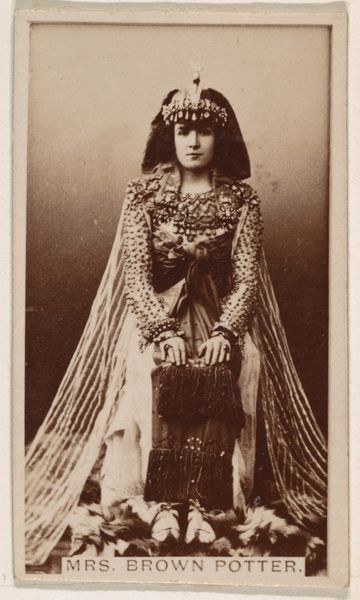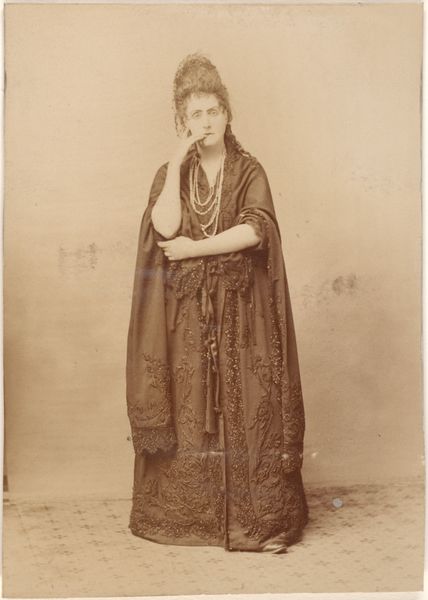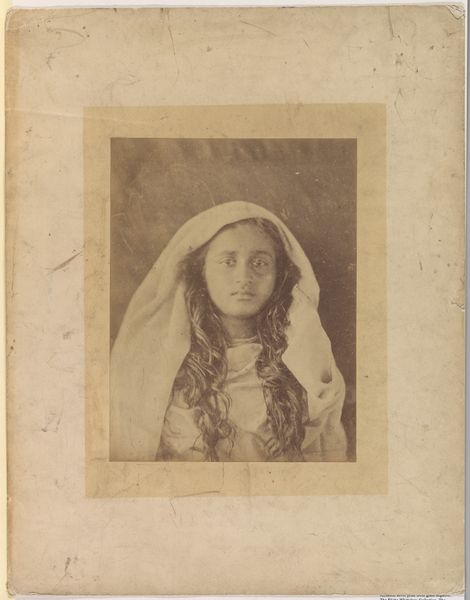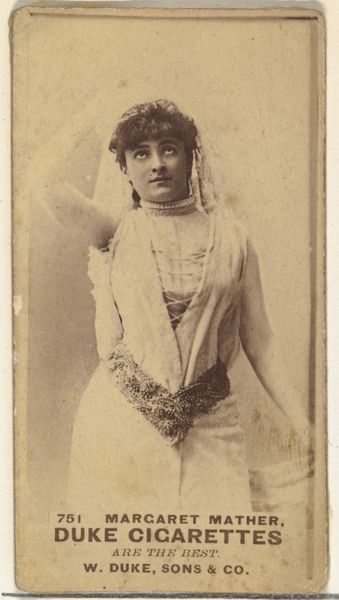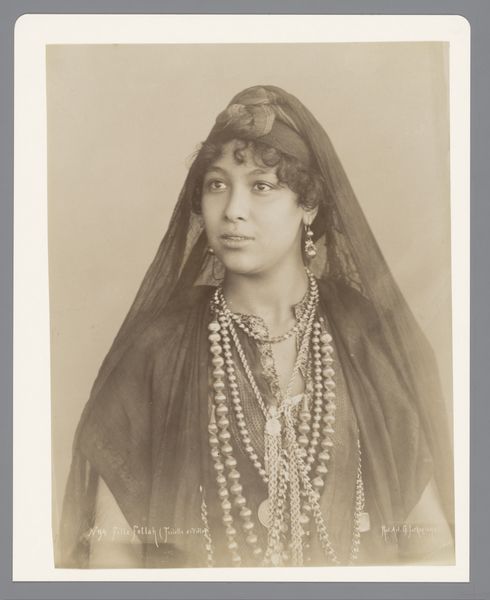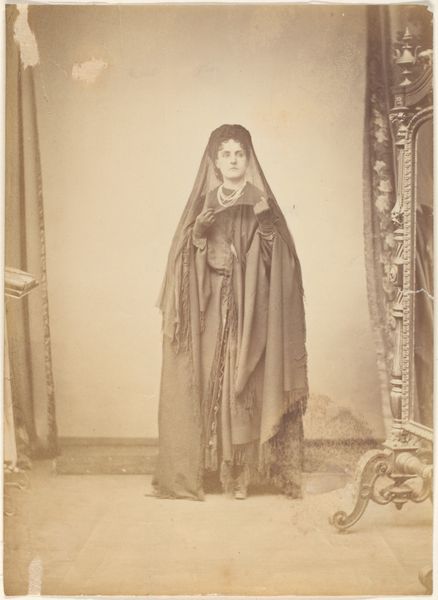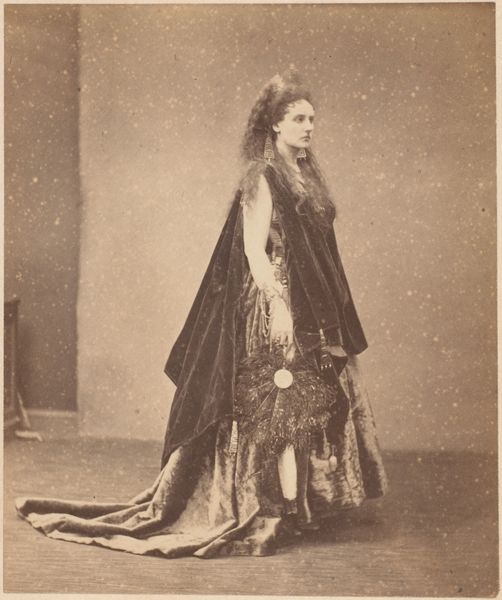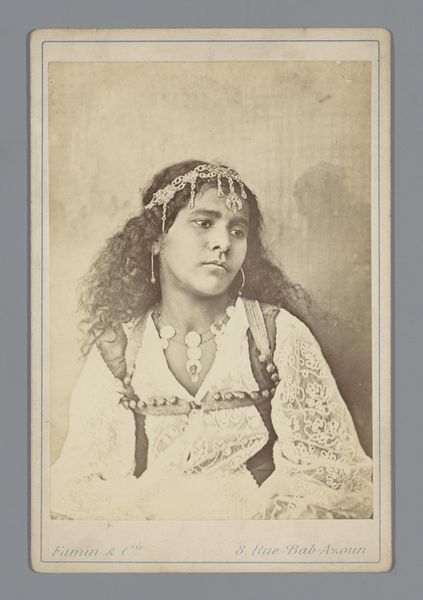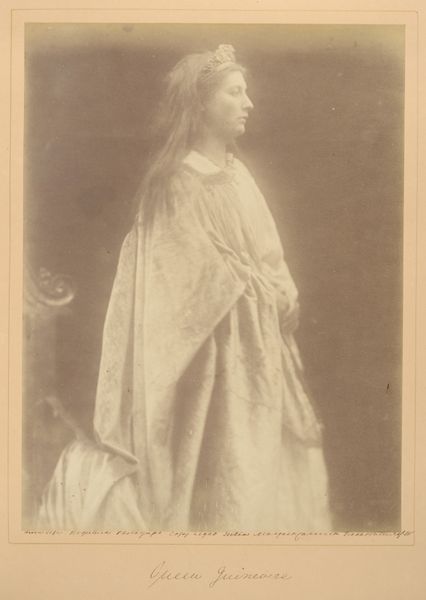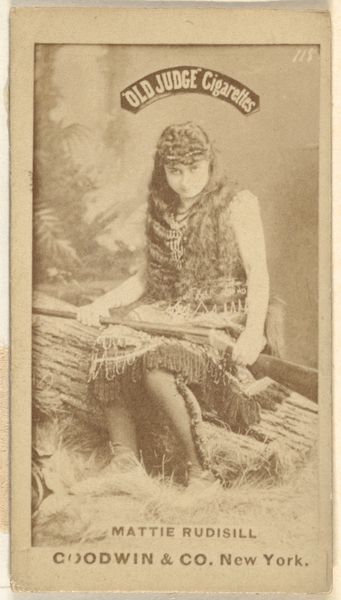
silver, print, photography
#
portrait
#
16_19th-century
#
silver
#
portrait image
# print
#
charcoal drawing
#
charcoal art
#
photography
#
portrait reference
#
portrait head and shoulder
#
england
#
yellow element
#
men
#
animal drawing portrait
#
portrait drawing
#
facial study
#
digital portrait
Dimensions: 32.7 × 26.8 cm (image/paper); 44.4 × 35.5 cm (mount)
Copyright: Public Domain
Editor: This is Julia Margaret Cameron’s "Balaustion," a silver print from 1871, currently housed at the Art Institute of Chicago. I'm really struck by the textural quality and almost dreamlike state achieved through the silver printing process. How do you see this portrait interacting with the means of its production? Curator: This image presents a fascinating case study in the commodification of artistic labor. Consider the sittings required to produce the work. Photography in this era relied upon a time consuming and tedious collaboration between photographer and sitter. Editor: It must have been difficult to get people to pose for long periods. Curator: Absolutely, particularly in an era less accustomed to the lens. Think of Cameron's access to her subjects within the privileged circles she occupied, and then consider the chemical processes themselves. Silver, a precious metal, transformed here into both a representational tool and an object of beauty. How does the inherent value of silver as a material inform your reading of the portrait? Does it elevate the sitter, the artist, or both? Editor: I hadn't really considered the social implications of using silver in that way. So, the photograph itself becomes an object of value, imbued with the sitter’s status and the labor and materials needed for it's construction? Curator: Precisely. And look at the clothing, potentially sourced through the elaborate global trade networks of the time. What was the value placed on it by those that made it and by Cameron herself when making the portrait? Cameron transforms material and sitter into object, inviting the viewer to engage with the complex exchange that happens through a photograph of this nature. Editor: I will definitely look at photographs in a different way now, understanding it more as a meeting place of material economies. Curator: Indeed. It highlights how so-called "art" isn’t separate from the world, but deeply embedded in material processes and societal power dynamics.
Comments
No comments
Be the first to comment and join the conversation on the ultimate creative platform.
